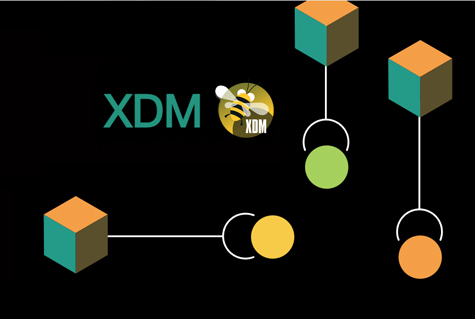This article outlines the benefits of utilizing an automated test data provisioning tool like XDM from UBS Hainer and highlights the key requirements necessary for maximizing its effectiveness.
Complexity of the IT system
XDM can achieve optimal results in complex IT systems, which may involve diverse systems and database formats in various combinations. This complexity is often found in system landscapes that have grown over many years and have been repeatedly expanded. Therefore, the flexibility of an automation tool is particularly beneficial.
The software can be either self-developed applications that form a significant portion of the business processes or third-party software products connected with a certain degree of complexity, such as logical adapters. On the flip side, it could be software with extensive customization options for individual configurations like XDM. And the greater the complexity of the IT system, the more pronounced the advantages offered by XDM are.
Automation reduces manual effort
Staff size plays a crucial role in the installation and configuration of a tool like XDM because the more employees who develop, test, and work with the tool, the more time can be saved. Automating the test data process reduces manual effort. The overall benefit increases with the number of employees using it.
Customers using the tool for just 10 to 20 business cases per day will already begin to see benefits. However, the tool can process several thousand business cases daily and the savings rise exponentially with greater volume. For optimal results, it is advisable to use the tool with at least 30 developers and testers, although there is no upper limit. UBS Hainer’s customers often have multiple development teams and 500 to 1,000 or more developers.
From individual applications to the entire application landscape
The development teams work simultaneously on various aspects of the application, with each subsection being interconnected with other areas of the software. The teams order the necessary test data for development, which is then used at the same time by the other teams.
When examined from the standpoint of a specific team, development primarily centers around the project or application at hand, such as the CRM system, billing system, or warehouse management system. The updated application only becomes part of the overall application landscape during the full expansion stage.
Example from the insurance sector
An illustration that demonstrates the interconnected nature of data could be the insurance industry. For example, in this case, there is partner management, contract management, claims processing, and all the related data. The system must store information about on-site damage assessment, the employee assigned to each claim, and the contents of their report. As a result, the insurance company requires a distinct application, and a specialized development team is assigned to create it.
To test even such a relatively simple application correctly, it is ideal to use a dataset that covers the entire range of applications. For example, if there is no damage, there is nothing to do. A claim is only reported if there is a contract, a contract only exists if there is an insured person, an insured person only exists if there is an insurance agency, and so on. To conduct a successful end-to-end test, it is essential to have high-quality test case data that accurately reflects the correlations between all the connected data.
XDM supports software development in all environments
To prevent conflicts in complex initial situations, software development employs a series of diverse environments. These include development, testing, integration, pre-production, and production. Teams test components individually before gradually integrating them into the various environments. Within the integration environment, an integration test is used to verify the compatibility of individual applications with other components.
Summary
XDM from UBS Hainer provides optimal benefits to customers with complex data situations. If you require extensive testing, including API and manual tests on business objects with various constellations, high frequency of use, and employ more than 30 developers and testers, XDM is worth considering.


